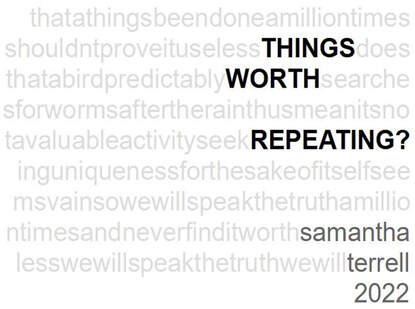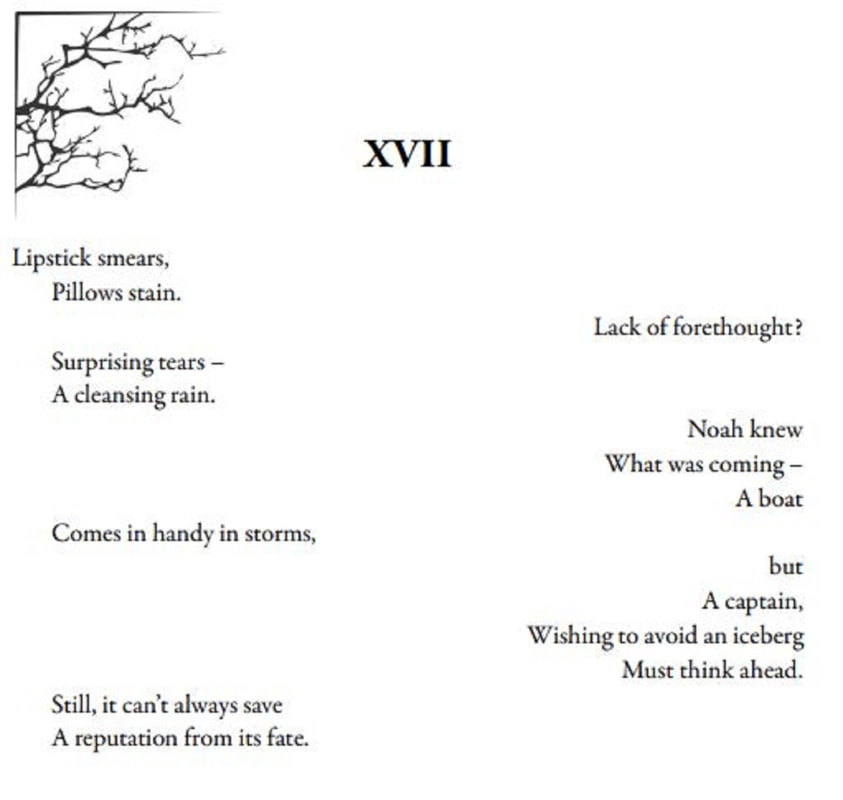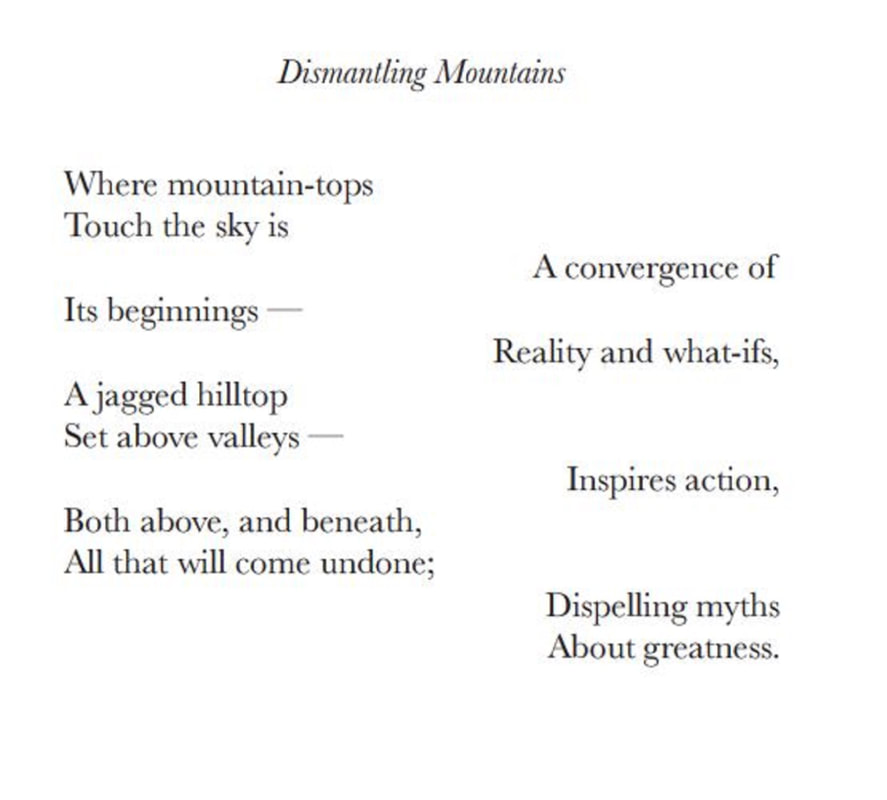ABOUT THE (CONTRAPUNTAL) TRINITAS
Books, Examples, Resources:
|
Samantha Terrell has not so much written to fulfill the needs of a particular form as discovered the only form that can do justice to this exceptional and spellbinding piece of poeticism. Initially I was concerned at having to negotiate the paths of this extended poem, but my hesitation was quickly forgotten as I abseiled down and across her ingeniously worked phrases and images. - Roger Hare, Pushcart Prize Nominee What is a contrapuntal trinitas A contrapuntal trinitas, or "trinitas" ("three in one") for short, is an experimental form of poetry written to create (at least) three distinct, but related, poems in one – hence the term contrapuntal(1). However, unlike other types of contrapuntal poetry, such as a cleave (2) or a dialectic (3), the trinitas liberates both poet and reader with a free verse style that bears a resemblance to Japanese Zuihitsu (4), as well as flexible stanza length. It can be rhymed or unrhymed and does not follow a distinct meter.
Therefore, a trinitas need not set up opposing arguments, as in dialectical literature, nor must it be aligned line-by-line and side-by-side such as cleave poetry, but instead offers flexibility of stanza length. While I wouldn’t wish to place limitations on how other poets may attempt the form, I recommend keeping the stanzas to six lines or fewer when possible. Many of my own trinitas poems use approximately four or fewer lines per stanza, which I feel assists the reader in appreciating a continuous flow of the piece. Ultimately, a trinitas may be approached by reading first, in a zig-zag manner, scanning back and forth through the stanzas; second, from the top, but reading only the stanzas on the left side of the page; and third, from the top, but reading only the stanzas aligned on the right. All three pieces within the one, will exhibit value and meaning in their own right. The idea to write in this form came to me after reading many poems which utilize caesura (line breaks or pauses) and/or white space, whereby I was bothered that the sets of phrases on one side of the page or the other, couldn’t stand alone or make sense apart from those on the opposite side. So I set to work using phrases from my own previously published poems, and my book Things Worth Repeating? (2022) was born. After doing extensive research, I dubbed the form a trinitas (with an “s”) because another title for this type of contrapuntal poetry did not heretofore present itself. Thank you for your interest. Insights or questions may be directed to: samanthaterrell[at]protonmail[dot]com. --- Notes: 1. Contrapuntal Form: Contrapuntal poems combine multiple poems into one to create a single composition that builds on its components. - www.masterclass.com 2. Cleave: Cleave is part of an exclusive lexical club whose members are known as contronyms: words that have two meanings that contradict one another. -Merriam Webster Dictionary 3. Dialectical Method in Literature: By playing this dialectical game [one] can appear to present contrary views as their respective proponents might, and then expose the errors of those he opposes, leading the readers to accept his own conclusions. -Encyclopedia Britannica 4. Zuihitsu, 10th Century Japanese Form: This capacious genre incorporates nonfiction, musings and confessions, poetry, and miscellany to create a spontaneous, layered text. - Poetry Foundation |




